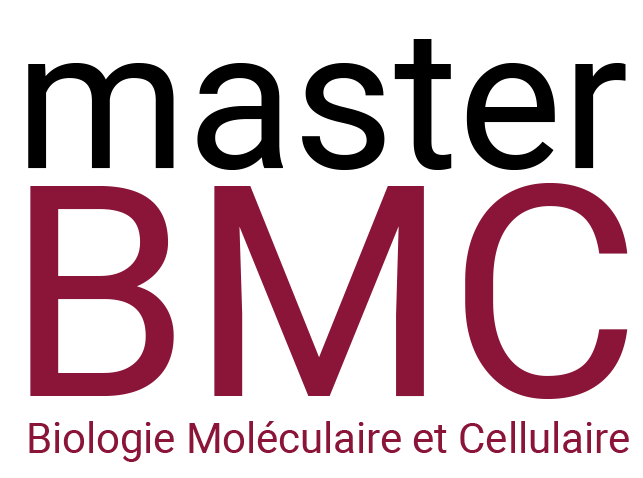Understanding the function of a histone H4 variant in initiating transcriptional and post-transcriptional silencing in Neurospora crassa
Responsable de l’encadrement : Eugene GLADYSHEV
Tél: 0140613993 E-mail: eugene.gladyshev@pasteur.fr
Institut Pasteur
Résumé du Projet de Stage
Our group is interested in discovering and characterizing general mechanisms of homology-directed epigenetic regulation. In eukaryotes, such mechanisms may manifest themselves in phenomena as diverse as transvection, paramutation, random monoallelic gene expression, repeat-induced gene silencing, co-suppression, meiotic silencing and quelling. While such phenomena have been analyzed in great detail, the nature of the homology-dependent signal at their basis has remained mysterious. To uncover and dissect this signal, we use the fungus Neurospora crassa as an exceptionally suitable model organism, for several reasons, including the fact that it retains all major epigenetic pathways (constitutive and facultative heterochromatin, dynamic cytosine methylation and fully functional RNAi), yet, at the same time, features some of the most efficient homology-directed silencing processes ever described in eukaryotes. These processes are known as repeat-induced point mutation (RIP) and meiotic silencing by unpaired DNA (MSUD). By dissecting the homology requirements of RIP and MSUD, previously, we uncovered the existence of a recombination-independent mechanism of DNA homology recognition that appears to match double-stranded DNA molecules directly, without relying on single-stranded intermediates. By employing a molecular dynamics approach, we have created an all-atom model of homologous dsDNA-dsDNA pairing consistent with our genetic results. The model features two DNA duplexes coiled into a right-handed plectoneme and making homologous contactsevery 22 base-pairs. Intriguingly, in this model, the dsDNA segments adopted a C-form conformation. By inspecting available models of C-DNA, we noticed that the major groove of C-DNA, being quite shallow, allows nearly perfect initial homologous dsDNA-dsDNA contacts without atom-atom clashing. Thus, we have formally proposed the role of C-DNA in facilitating homologous DNA pairing. Overall, our studies suggest that homologous dsDNA-dsDNA pairing can provide a general signal for initiating epigenetic silencing, and we are now working towards understanding the conditions that promote the B-to-C DNA transition in vivo.
While the extreme sensitivity of RIP and MSUD to DNA homology was instrumental in discovering the existence and key properties of the recombination-independent mechanism of homology recognition, RIP and MSUD themselves proved rather complicated for genetic and biochemical analysis, because these processes occur only in a few nuclei during a sexual stage (which requires mating between two different parental strains). Thus, we have turned to the vegetative stage of the Neurospora lifecycle, which is readily amenable to biochemical analysis and forward genetics approaches. To this end, we designed a system, in which perturbation of the nucleosome-rich chromatin state or transcription over a model repetitive DNA region trigger heterochromatin formation and siRNA expression. Using these results as a starting point, we have developed a forward genetics screen to discover genes required for the initiation of silencing in this system. The first cohort of the identified genes implicated several conserved pathways present in higher eukaryotes. For example, we recovered a few alleles of a gene encoding ATRX, a chromatin modeler noted as one of the main “guardians” of the human genome. Curiously, ATRX (known as SAD-6 in N. crassa) is also needed for the expression of siRNAs during MSUD, hinting at a possibility that these processes may share the same basis. Another example is provided by a histone H4 variant (hH4v), the deletion of which has abrogated both the formation of heterochromatin and the expression of siRNAs specifically over the perturbed/transcribed repetitive region.
The M2 project will focus on understanding the role of hH4v in initiating silencing in the above system. In our preliminary work, we found that a tagged version of the protein is fully functional. We also found that hH4v is partitioned into two main fractions: one is chromatin-bound, the other one corresponds to a free complex of ca. 120 KDa, perhaps representing a chaperone-bound pool of hH4v. The project will (1) dissect the organization and function of this complex (by mass-spec and standard biochemical approaches), (2) analyze the occurrence of hH4v in the context of chromatin (starting with a ChIP-seq experiment), and (3) identify additional factors that may be required for implementing the role of hH4v-containing complex may be a direct partner of ATRX.
Dernières Publications en lien avec le projet :
- Mazur AK, Gladyshev E. 2023. C-DNA may facilitate homologous DNA pairing. Trends Genet. 39(7):575-585. doi: 10.1016/j.tig.2023.01.008. PMID: 36804168. HAL: pasteur-04115660v1
- Rhoades N, Nguyen TS, Witz G, Cecere G, Hammond T, Mazur AK, Gladyshev E. 2021. Recombination-independent recognition of DNA homology for meiotic silencing in Neurospora crassa. PNAS 118:e2108664118. doi: 10.1073/pnas.2108664118. PMID: 34385329. HAL: pasteur-03261429v1
- Carlier F, Nguyen TS, Mazur AK, Gladyshev E. 2021. Modulation of C-to-T mutation by recombination-independent pairing of closely positioned DNA repeats. Biophys J. 120:4325-4336. doi: 10.1016/j.bpj.2021.09.014. PMID: 34509507. HAL: hal-03399739v1
Ce projet s’inscrit dans la perspective d’une thèse
Ecole Doctorale de rattachement : BioSPC
Equipe d’Accueil: Molecular Genetics and Epigenetics Unit
Intitulé de l’Unité: Institut Pasteur
Nom du Responsable de l’Unité: Eugene GLADYSHEV
Nom du Responsable de l’Équipe: Eugene GLADYSHEV
Adresse: 28, rue du Docteur Roux, Paris 75015

